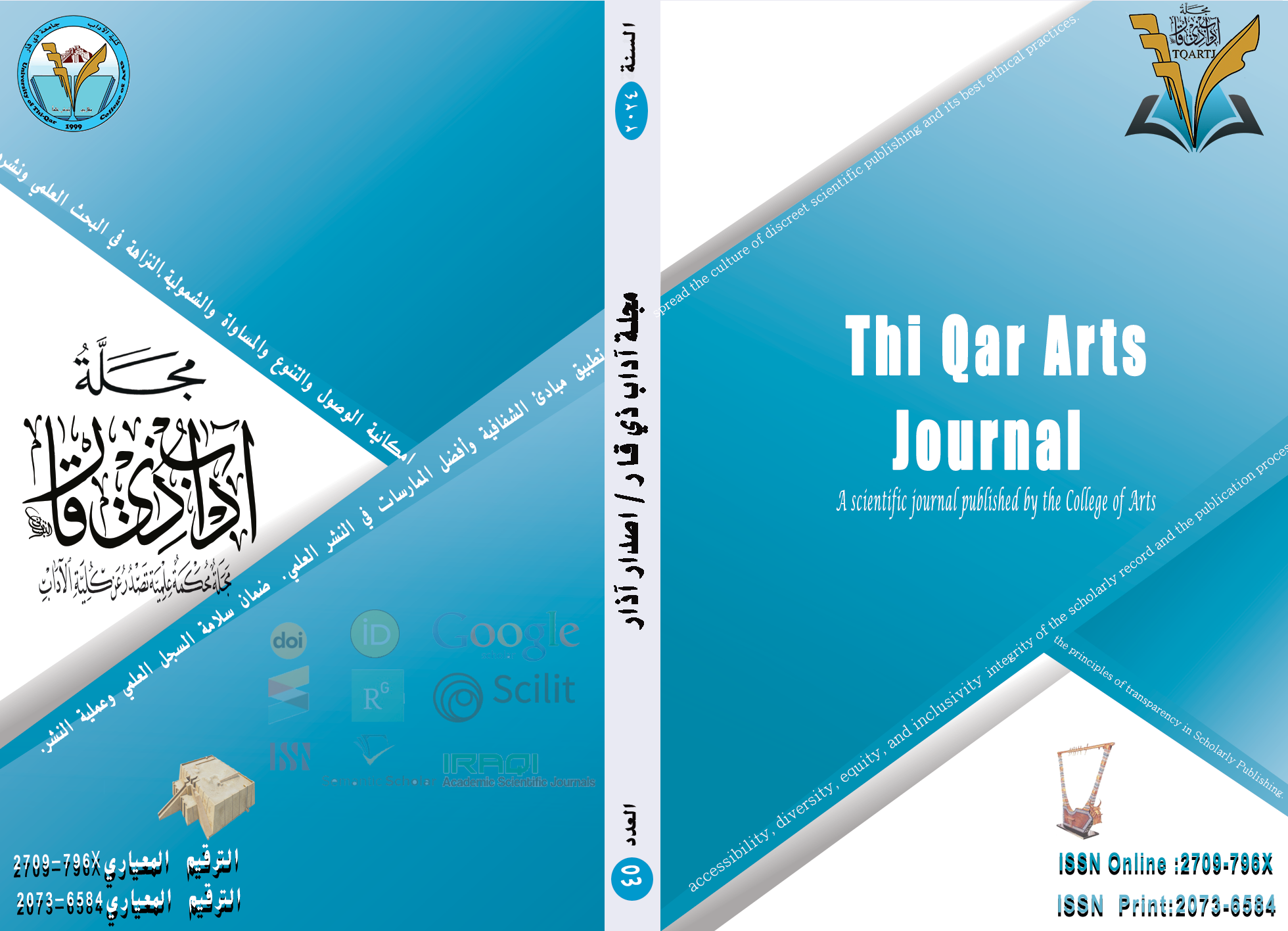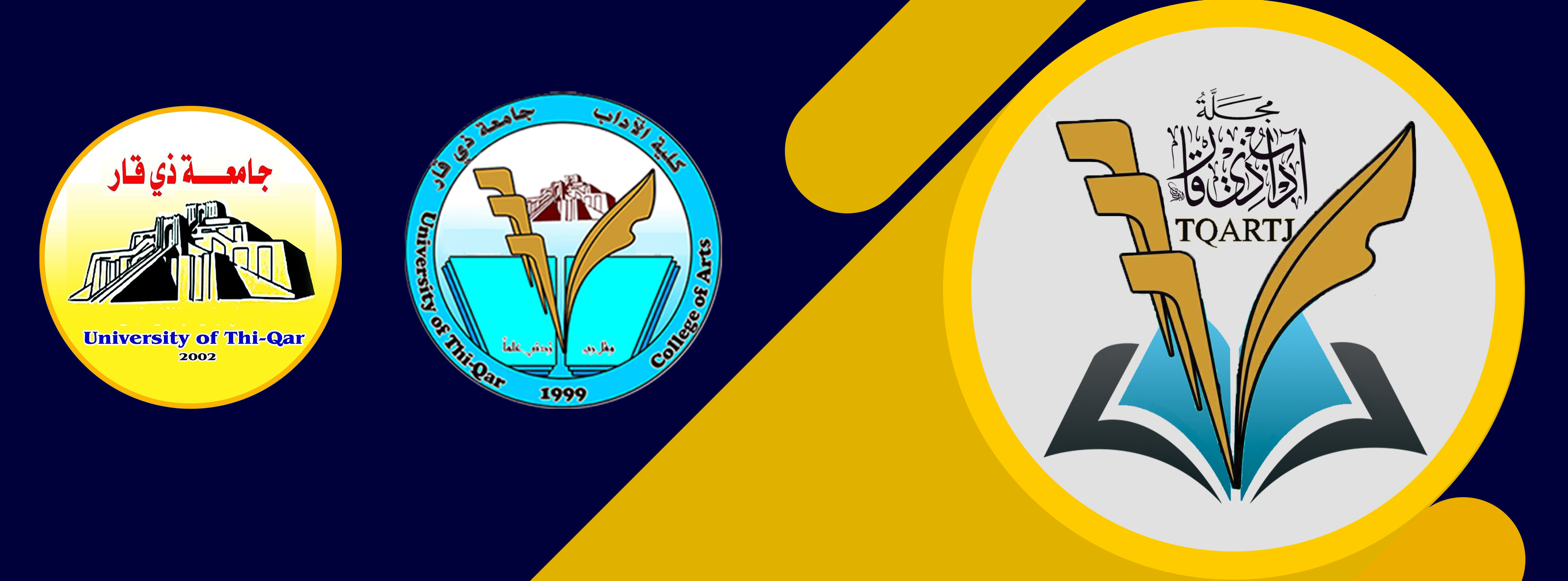“Rhetorical Theory of the art of expression” in dealing with new linguistics
"نظرية فنّ البیان البلاغية" في التعاطي مع اللسانيات الجدیدة
DOI:
https://doi.org/10.32792/tqartj.v1i45.465Keywords:
Arabic rhetoric, theory of the art of rhetorical expression, new linguisticsAbstract
Arabic rhetoric grew up in the embrace of the Holy Qur’an, and the greatest concern of its pioneers was to reveal the aesthetic secrets of this eternal miracle. There is no doubt that it provided great services at that time in highlighting the literary and rhetorical subtleties of the Holy Qur’an, but it gradually froze and calcified, until it overcame on the verge of death, it was deleted from the literary system Western studies, under the pretext that their effectiveness has expired and are no longer suitable for analyzing literary texts in the current era. And they are right, in the opinion of this researcher, because international literature has been exposed to violent trends and has experimented with new types of literary genres that traditional Arabic rhetoric is not suitable for understanding, let alone interpreting and analyzing. This is what prompted the researcher to draw up a new rhetorical system that was officially registered in Iran under the title: “The Theory of the Art of Rhetorical Statement.” It is a theory that has origins (to build it on universal philosophical foundations), rules (to rebuild it by employing modern literary developments), and chapters (to replace the trilogy of meanings, statement, and creativity in Sakaki system). This research is responsible for identifying the seven rules that the researcher believes will guarantee this new system its creativity and modernity to keep pace with what is new in the arenas of literary text in today’s world. The researcher applied the descriptive, analytical, exploratory method to draw the seven chosen rules in his rhetorical theory, which are: areas, positions, paths, spaces, sections, appearances, and levels. It is capable of dealing with rhetoric with new linguistics and literary sciences, which contemporary Western writers considered alternatives to the traditional subject of rhetoric. The research reached results, the most important of which are: the necessity of rebuilding rhetoric by sorting between the areas of pronunciation and meaning, and the positions of the sender and the recipient, introducing the paths of literature and their new spaces, the passages of speech, its oral and written manifestations, and its two levels, the apparent and the hidden, in the rhetorical lesson.
Downloads
References
Arabic books:
Bin dhril, Adnan, (2000), text and Stylistics between theory and practice, Damascus: Arab Writers Union.
Al-jurjani, Abd al-Qaher, (1372 Ah.S.). The secrets of rhetoric. I. 2. Cairo: Al Manar.
Hassan, Hashem, (2019), teaching science using conceptual circuit maps, Iraq Duhok: cordman press.
Khumri, Hossein (2007), text theory from the structure of meaning to semiotics of meaning. Algeria: difference publications.
Al-Kholy, Amin (1961), methods of renewal in grammar, rhetoric, interpretation and literature, Cairo: Dar Al-marefa.
Al-Kholy, Amin, (1996), the art of saying, Cairo: Dar Al-Kitab press.
Al-zinnad, Al-Azhar, (1992), lessons in Arabic rhetoric, towards a new vision, Beirut: the Arab Cultural Center.
The knives. Youssef (1983), the key to science, t: Naim Zarzour, Beirut: House of scientific books.
Salameh, Musa, (1964), modern rhetoric and the Arabic language, Beirut: Salameh Musa publications.
Elshayeb, Ahmed, (1976), style; an analytical rhetorical study in the origins of literary styles, Vol.7, Cairo: the Egyptian Renaissance.
Tabatabaei, Mohammad Hossein, (2010), the balance in the interpretation of the Koran, C ۱۲, Vol.2, Tehran: Islamic Book House.
Kafouri, Khalil, (1994), towards a new rhetoric, Beirut: Nadaf publications.
Moslouh, Saad, (2010), in Arabic rhetoric and linguistic Stylistics; New Horizons, Vol.2, Cairo: the world of books.
Hadara, Muhammad Mustafa, (1989), Bayan science, Beirut, Dar Al-Uloom Al-Arabiya.
Yaqout, Mohammed Suleiman, (1995), linguistic aesthetics: meanings, statement, Badie, Cairo: University Knowledge House.
Arabic magazines:
Hajizadeh, insulting. (1387), which is based on Arabic literature and world literature. Journal of Arabic language and literature, Sal Dom Shamara 4, Bahar 1387.
Khaqani, et al., (2009), the activation poem in the Arabic and Persian literature, A Comparative Study, Journal of research in the Arabic language, the first cycle, pp. 51-62
Al-Omari, Muhammad (1991). The rhetorical denominator in the rhetorical lesson, Journal of Sal studies, No. 5.
Mahfouz Hussein Ali, al-Sajjadi newspaper: Al-Balagh Al-Kadhimiya magazine, the first year, P ٦.
Arabic dioceses:
Maachou, Bou wishma, (2019), cultural patterns in pre-Islamic poetry, the tribe's pattern as a model, decnorah thesis, Faculty of Arts and Languages, University of gilali liabs-Sidi Bel Abbas-supervision of green Barka, Algeria
Persian books:
Khaqani Isfahani, Muhammad, (1380). Nasib-e ghariyeh, physics and philosophy, Isfahan: jihad daneshgahy.
Shafi'i kadkani, Muhammad Riza (1392). Zaban poetry der nozr-e sofieh, Teheran: sokhn publications.
Laland andreh, (1377), a scientific and critical Farhang of philosophy, translator: Gholamreza waqiq, Tehran: Ferdowsi
Hawkes, Terence, (1380), a metaphor, translated by Farzaneh Taheri, chap Dom, Tehran, publishing center.
Sources in the information network:
https://mawdoo3.com/المدارس_النقدية_في_العصر_الحديث
https://ar.wikipedia.org/wiki/نثر
https://ar.wikipedia.org/wiki/رواية_ (literature)
https://ar.wikipedia.org/wiki/مسرح
https://mawdoo3.com/تعريف_الشعر
http://st-takla.org/Bibles/BibleSearch/showChapter.php?book=53&chapter=1
Downloads
Published
How to Cite
Issue
Section
Categories
License
Copyright (c) 2024 محمد خاقاني أصفهاني

This work is licensed under a Creative Commons Attribution 4.0 International License.
The journal applies the license of CC BY (a Creative Commons Attribution International license). This license allows authors to keep ownership of the copyright of their papers. But this license permits any user to download, print out, extract, reuse, archive, and distribute the article, so long as appropriate credit is given to the authors and the source of the work. The license ensures that the article will be available as widely as possible and that the article can be included in any scientific archive.












